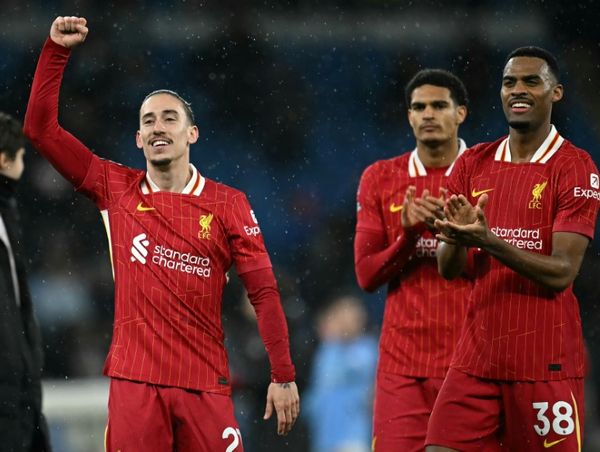
Federal Reserve Chairman Jerome Powell's "higher for longer" hawkish pivot on rate hikes, outlined in Tuesday's Senate Banking Committee testimony, snuffed-out a nascent March rally on Wall Street and triggered a wholesale repricing of government bond yields in markets around the world.
In prepared remarks that ignited the biggest sell-off on Wall Street it two weeks, Powell warned that larger rate moves might be necessary to tame the stubborn pace of inflation in the world's biggest economy, adding that "we would be prepared to increase the pace of rate hikes" based on the "totality of data".
Investors read that as suggesting a greater chance of a 50 basis point move at the Fed's next meeting beginning on March 22, with the odds of that hike surging to around 72%, based on data from the CME Group's FedWatch.
Markets are also pricing in the "higher for longer" aspect of Powell's assessment, with bets on a terminal Fed Funds rate that's north of 5.5% in July rising to around 80% compared to less than 5% at the beginning of February.
- Stocks Hammered As Powell Testimony Points to 50-Basis-Point March Rate Hike to Combat Sticky Inflation
"The market is finally coming to the realization that elevated interest rates are here to stay and the idea of a Fed pivot anytime soon is wishful thinking," said James Demmert, chief investment officer at New York-based Main Street Research.
"The global economy is more resilient than many realized, which will make inflation stickier and is extending central bankers' terminal rate target," he added. "Inflation has come down but is nowhere near the Fed's 2% target so there is much work to be done given the stubborn strength of the economy and wage inflation."
Is 6% The New 4%?
But while a new narrative on rates, that sees a peak Fed Funds level of around 6% -- including BlackRock's global fixed income chief Rick Rieder -- is starting to emerge among some of the biggest names on Wall Street, stocks remain far more vulnerable to a fundamental downturn than they do from a Powell policy error.
That very downturn, while admittedly elusive amid a resilient job market, stronger-than-expected economic growth and elevated consumer spending, is nonetheless before foretold in the bond market's most-reliable recession signal.
Rate-sensitive 2-year Treasury note yields hit a fresh October 2007 high of 5.11% yesterday, before easing to 5.053% in New York trading as traders amped-up bets on a 50 basis point rate hike at the next Fed meeting later this month in Washington.
Short-term bond yields were also on the move in Germany, where the benchmark Schatz hit a 2008 high of 3.367% while 10-year Japanese government bond yields breached the higher end of the central bank's trading band.
At the same time, however, 10-year note yields eased to 3.9352% as investors seemed to bet on both slowing near-term growth and a softening of longer-term inflation forecasts, pegging the gap between the two benchmarks at around 108 basis points, the highest since August of 1981.
According to a study from the San Francisco Federal Reserve, a sustained inverted yield curve has preceded all of the nine recessions the U.S. economy has suffered since 1955, making it an extremely accurate barometer of financial markets sentiment.
However, while the economy may continue to avoid recession -- possibly into the second half of the year, corporate earnings are likely to face downturn pressure more immediately.
Earnings Forecasts Continue To Weaken
Collective S&P 500 profits fell 3.2% from the previous year over the fourth quarter, according to Refinitiv data, hitting a share-weighted $440.9 billion.
That tally is set to decline further, with March quarter earnings forecast to fall 4.5% and June quarter earnings likely to slip 3.5% from last year's levels, confirming the so-called 'earnings recession' that could trigger equity market outflows and a pullback in corporate capital investments.
Some of the biggest U.S. companies, in fact, are preparing for exactly that: tech bellwethers such as Microsoft (MSFT), Google (GOOGL), Meta Platforms (META) and Amazon (AMZN) have recently unveiled plans to fire tens of thousands of workers, while retail giants Walmart (WMT), Target (TGT) and Home Depot (HD) have all issued muted 2023 profit forecasts amid concerns for a consumer spending retreat.
And while Warren Buffett cautioned investors earlier this month that he has "yet to see a time when it made sense to make a long-term bet against America", he's also dumping growth stocks like Taiwan Semi, lifting his stake in cash-generating energy companies like Occidental Petroleum (OXY) and defending share buybacks instead of putting cash to work in his 'real economy portfolio'.
The housing market is also extending its 2022 slump, with mortgage rates back on the rise -- the MBA said Wednesday that the average 30-year fixed is now 6.79% -- and purchase applications are running at nearly half of last year's pace.
A recent Reuters poll, based on data from the closely-tracked Case/Shiller Index, sees U.S. home prices falling 4.5% this year, while remaining flat in 2024, as mortgage cost rise to reflect the higher Fed interest rate environment.
That Sounds Expensive
All of these conditions would be challenging for equity market performance on their own, even without the pressure of further Fed tightening, but become even more so when set against the rich valuations currently pegged to the S&P 500.
The benchmark is trading at multiple of around 18 times to the earnings companies will generate over the next twelve months, a level that's around 20% ahead of its longer-term trend.
“'Higher for longer' should be taken seriously by the markets," said John Lynch, CIO for Comerica Wealth Management in Charlotte, North Carolina, who advises clients to seek quality in fixed income and value and profits in small cap stocks.
"Higher rates and inflation should prove a headwind for P/E expansion, so investors should expect total return to derive from earnings and income," he added.
Bank of America's closely tracked Flow Show report also noted another $7.4 billion pullback from U.S. equity funds, with around $8.4 billion finding its way into fixed-income funds.
Respondents also linked a 4% 10-year Treasury note yield with a 3,800 price target on the S&P 500, suggesting another 5.3% pullback from current levels if markets continue to price in further Fed rate hikes.
"Though we continue to believe that the global bear market, now in its 14th month, has made tremendous progress we do not believe we have yet started a new bull market and investors should still exercise caution," said Main Street's Demmert. "We advise a lower-than-normal equity exposure until market valuation, sentiment and Fed policy are more accommodative .. and to reach out to longer maturity, quality individual bonds as well as short and intermediate paper."
"There is great value in this market as inflation trends lower," he added.







